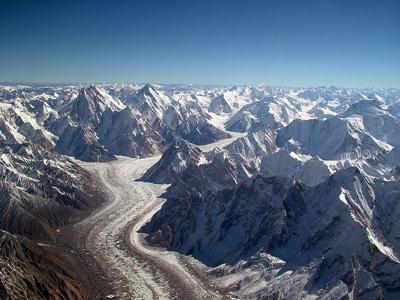Ozone Hazards
by girdhar
(Bhilai, India)
I'd like to know about air pollution and its effects as well as the chance of damaging the ozone layer.
Barry's Response - Girdhar:
There are definitely components of the pollution we spew into the air that cause ozone hazards by affecting the thickness and concentration of the ozone layer in the stratosphere.
The ones we hear about mostly have carbon atoms and halides, like fluorocarbons and chlorofluorocarbons. Wikipedia is always a good source of science info. Check out this page. Wikipedia page.
In order to understand and prevent air pollution, knowledge of meteorology is important.
A meteorologist can provide a fascinating perspective on air pollution and its effects, as well as how it affects the ozone layer. Here's how someone interested in these topics might find meteorology interesting:
- Understanding Atmospheric Processes: Meteorology is the study of the Earth's atmosphere, including its composition, structure, and dynamics. A meteorologist can tell you how pollutants interact with the atmosphere, how air masses move, and how weather patterns affect pollution dispersion and concentration.
- Climate change and weather patterns can be affected by air pollution. Air pollution, atmospheric conditions, and climate systems are all interconnected in meteorology. The study of meteorology can help you figure out how pollution affects weather events like smog, temperature inversions, and precipitation patterns.
- Depletion of the ozone layer: The ozone layer shields the Earth from harmful ultraviolet (UV) radiation. Meteorology can be used to understand the causes and consequences of ozone layer depletion, including the role of ozone-depleting substances like chlorofluorocarbons (CFCs). UV radiation levels are impacted by the transport and dispersion of these substances in the atmosphere.
- Meteorology involves developing tools and techniques to monitor and forecast air quality. Studying atmospheric conditions, pollutant emissions, and their dispersion patterns. Meteorology can provide valuable insights into how air pollution is assessed, monitored, and predicted, ultimately contributing to efforts to improve air quality.
- Meteorology provides a foundation for understanding the environment, weather systems, and human activities. People can develop a sense of environmental stewardship and recognize the importance of sustainable practices to protect the Earth's atmosphere by learning about air pollution and ozone depletion through meteorology.
The study of meteorology can provide a deeper understanding of air pollution and its effects, as well as the possibility of damaging the ozone layer. It's a fascinating way to learn about air pollution, climate change, and environmental protection, inspiring a passion for understanding and mitigating them.
Search this site for more information now.
Comments for Ozone Hazards
|
||
|
||
|
||
|
||
Do you have concerns about air pollution in your area??
Perhaps modelling air pollution will provide the answers to your question.
That is what I do on a full-time basis. Find out if it is necessary for your project.
Have your Say...
on the StuffintheAir facebook page
Other topics listed in these guides:
The Stuff-in-the-Air Site Map
And,
Thank you to my research and writing assistants, ChatGPT and WordTune, as well as Wombo and others for the images.
GPT-4, OpenAI's large-scale language generation model (and others provided by Google and Meta), helped generate this text. As soon as draft language is generated, the author reviews, edits, and revises it to their own liking and is responsible for the content.



